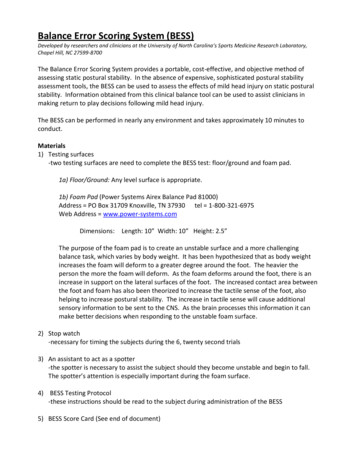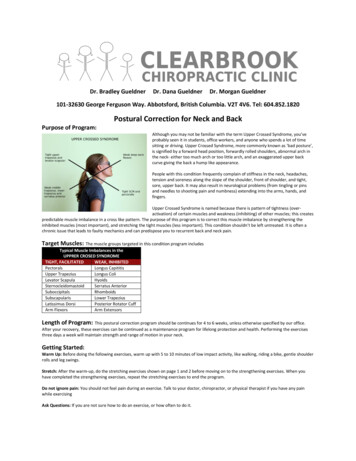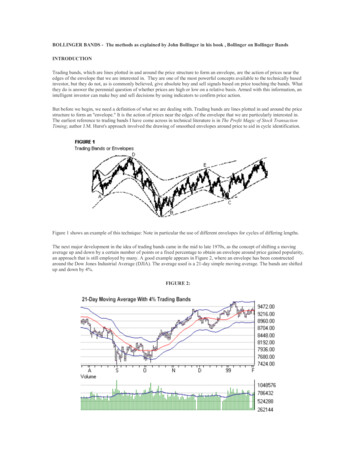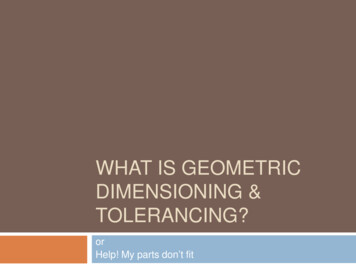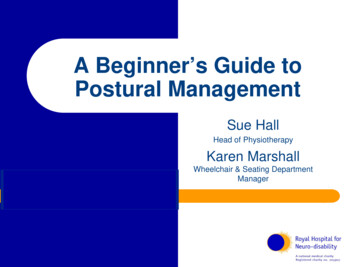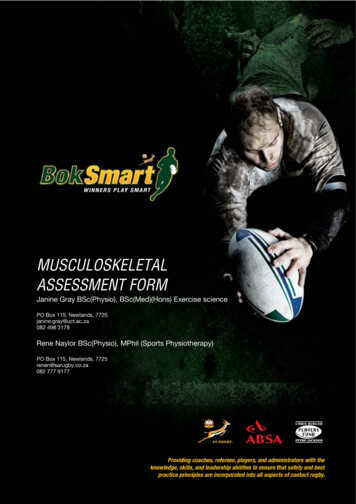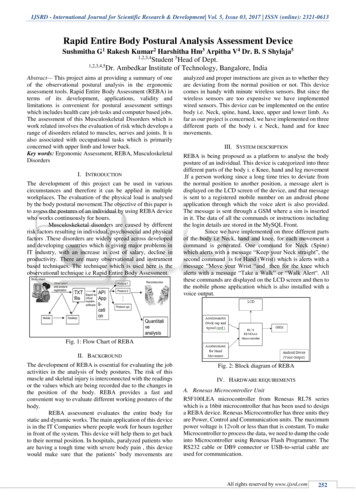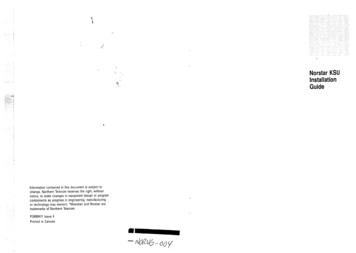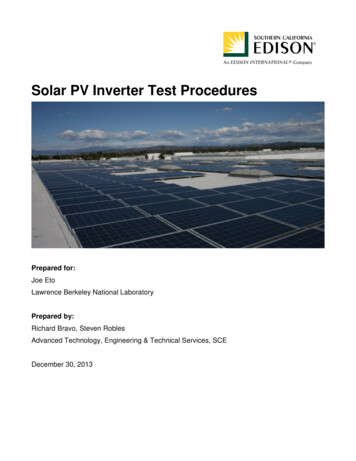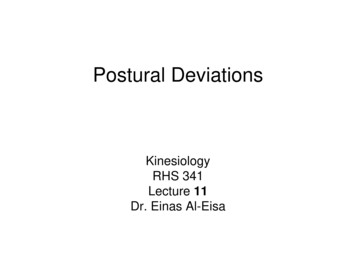
Transcription
Postural DeviationsKinesiologyRHS 341Lecture 11Dr. Einas Al-Eisa
Faulty posturePostural deviation can happen with eitheran increase or decrease of the normalbody curves, leading to: Uneven pressure within the joint surfaces Ligaments will be under strain Muscles may need to work harder (to holdthe body upright) Pain may occur
Postural assessment In standing: straight vertical alignment ofthe body from the top of the head, throughthe body's center, to the bottom of the feet From a side view: imagine a vertical linethrough the ear, shoulder, hip, knee, andankle. In addition, the three natural curvesin the back can be imagined
Postural assessment From a back view: the spine and headare straight, not curved to the right or left From the front: appears equal heights ofshoulders, hips, and knees. The head isheld straight, not tilted or turned to oneside
Scoliosis lateral curvature of the spine: The scoliotic curve may be:¾a single curve (C shaped)Or¾two curves (S shaped)
ScoliosisTypes1. Idiopathic scoliosis: The most common type Unknown cause Sometimes called “adolescent” scoliosisbecause it occurs most often in adolescents (80%of all idiopathic scoliosis cases) The other 20% are either “infantile” (from birth to3 years old), or “juvenile” (from 3 to 9 years old)
ScoliosisTypes2. Degenerative scoliosis: Sometimes called “adult” scoliosisbecause it is associated with aging(develops as the person gets older) Due to degeneration of the intervertebraldiscs and facet joints
ScoliosisTypes3. Neuromuscular (myopathic) scoliosis: Patients often can not walk as a result of aneuromuscular condition Develops due to:¾weakness of the spinal muscles (e.g., musculardystrophy)¾neurological problem (e.g., cerebral palsy)
ScoliosisTypes4. Congenital scoliosis: Rare Develops in infancy Due to congenital malformation of the spine
Diagnosis?
ScoliosisTreatmentObservationBackbracesSurgery
Bracing
Surgery
Kyphosis an increase in the posterior curvature ofthe thoracic spine May result in a noticeable round backdeformity More common in females than males
KyphosisTypes1. Postural kyphosis: Most commonly, kyphosis develops as aresult of poor posture Not associated with serious pain Physical therapy may play a great role in:¾patient education¾prescription of proper exercises
KyphosisTypes2. Congenital kyphosis: Occurs at birth Due to congenital anomaly such as incompleteformation of the spine Usually requires surgery
KyphosisTypes3. Sheuermann’s kyphosis: Due to the wedge-shaped vertebral bodies inthe thoracic region of the spine Associated with back pain Risk factors include: heredity and osteoprosis
Kyphosis
KyphosisTypes4. Degenerative kyphosis: Due to degenerative changes and weaknessof the ligaments supporting the spine
Lordosis an increase in the anterior curvature ofthe lumbar spine Associated with pregnancy, obesity, orkyphosis
Treatment of poor posturePrimary Goals To stop the progression of abnormal curvature To prevent deformity Treat the cause (if possible)
Physical therapy role Relieve muscle spasm using:¾ultrasound¾trigger point therapy¾transcutaneous electrical nervestimulation (TENS)¾thermal therapy
Physical therapy role Increase tissue flexibility using:¾manual therapy¾joint mobilizing techniques Improve balance using muscularstrengthening exercises
Physical therapy role Physical therapy alone can not reverse amature curvature Physical therapy is effective in pain reliefand improvement of strength and mobility
Physical therapy role Detection of postural errorsPatient educationRelief of abnormal tension and painRegaining strength and mobilityEstablishment of neuromuscular control
Postural re-education Poor posture involves:¾A faulty relationship of the various partsof the body which produces increasedstrain on the supporting structures¾Inadequate balance over the base ofsupport
Self motivation Patients must gain an appreciation that abalanced posture:¾is an asset!¾is attractive and improves self confidence¾makes movement more efficient¾reduces fatigue
Establishment ofneuromuscular control Although posture is automatic or reflexfunction, correction needs to be done attwo levels:1. Conscious control2. Automatic control
1. Conscious control When the patient learns about the positionof his body in space, then develops a newmotor skill through regular practice Start with correcting the “static” posture(from which movements takes place)
1. Conscious control Emphasis should be put on a correctbase with weight evenly divided betweenboth sides, and a systematic correctionof all segments involved in the posture Example, in standing, the emphasis will beon the correct balance of the pelvis overthe feet, the trunk on the pelvis, and thehead on the trunk
1. Conscious control Use a long mirror for reinforcement (newposture may feel uncomfortable) Build kinesthetic and visual awarenessgradually
2. Automatic control When performing a movement, the person’sattention will be on the purpose of themovement Automatic dynamic control allows the bodyto move from a static position (more or less)to a position of readiness for movement
2. Automatic control Provides both general and local stability Adjustments are made to maintain balanceand to overcome natural forces such asgravity (proprioceptive control)
Postural assessment In standing: straight vertical alignment of the body from the top of the head, through the body's center, to the bottom of the feet From a side view: imagine a vertical line through the ear, shoulder, hip, knee, and ankle. In addit
